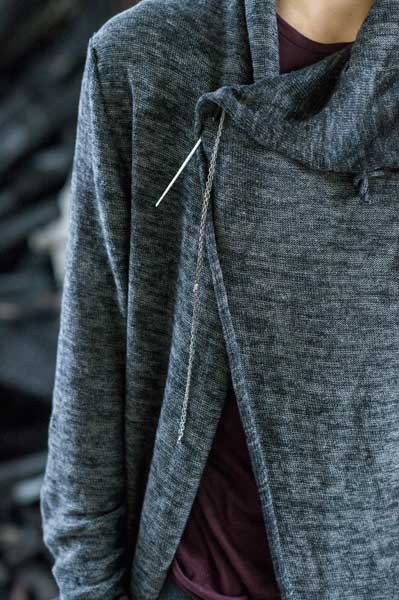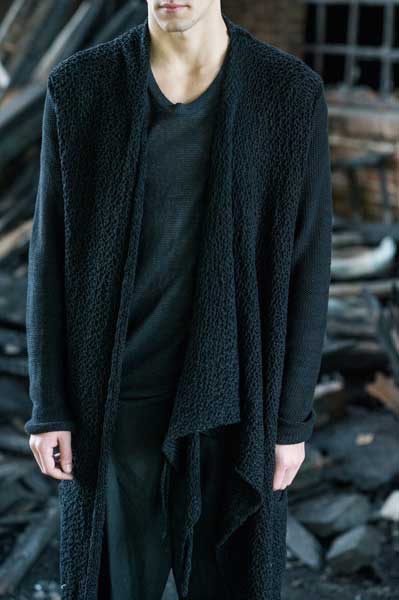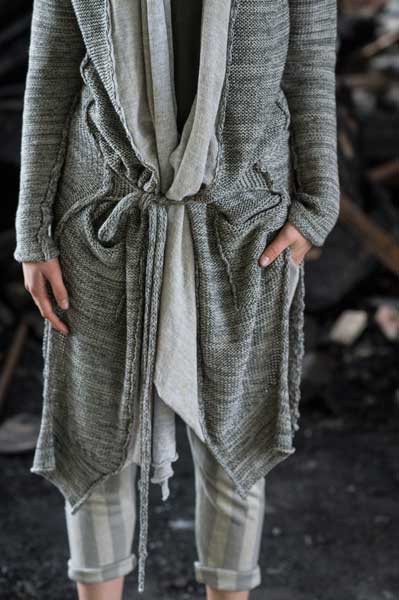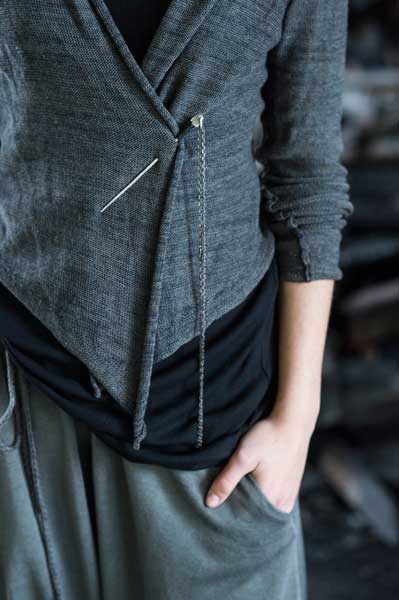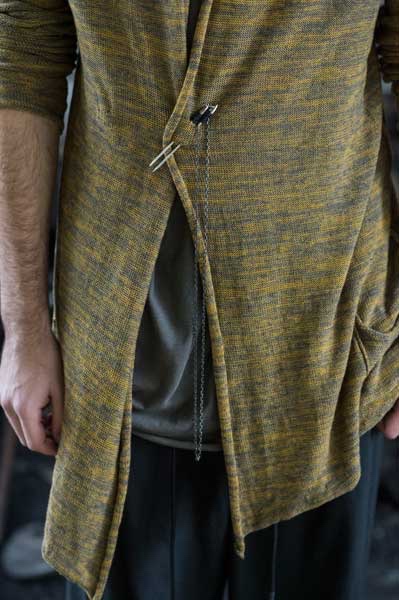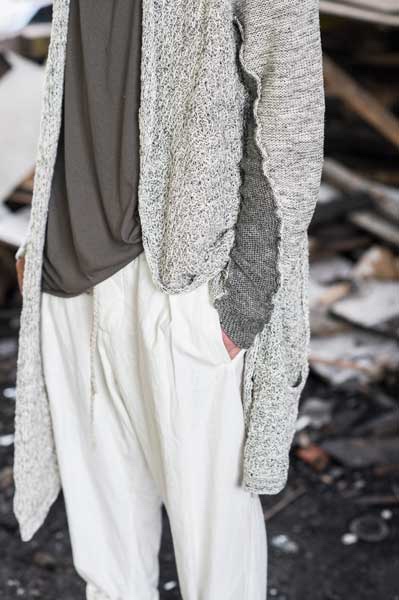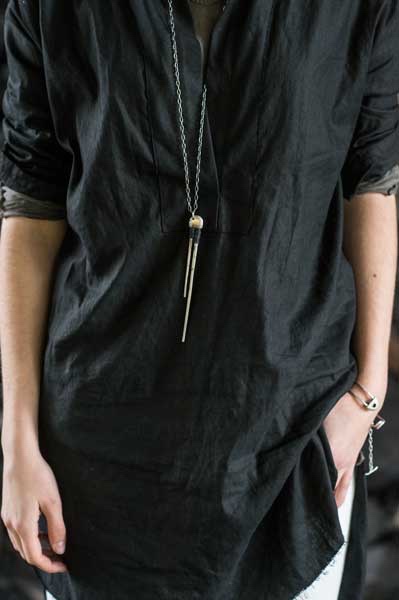A ‘Gesprek’ with Daniel Andresen.
A new dawn. In the realm of design, we are in desperate need of mavericks. This might be a call to those few born to lead and simply refuse to follow. When they carve their respective paths, they never look back. Nor do they need to. They just know where they are headed.
Daniel Andresen is such an observant. Sincere, polite and always most determined in his creative musings. When you explore his calm universe, you will find his work meticulously carved, astutely curated and naturally rich in understatement. Daniel chooses to let his work speak for itself, for him there is no need to shout. This results in a finely tuned balance struck between his garments, craftsmanship, tactility and function, that fosters an open dialogue between maker and wearer. Each piece is handcrafted, rich in composure and develops its character along its many journeys with silhouettes that still have a sense of wonder. They embrace a silent sense of curiosity, just like the person who initially conceived them.
Meet Daniel.
Homeland. The rugged shores of Northern Germany, your foundation. What are some of the most powerful memories you treasure?
The first things that spring to mind are the seaside and harbor. Two places so rich in expression and seasonal change. I spent my entire childhood and young adolescent years wading around these unique spots – especially in autumn, when the sea started to get a little bit rough and even would freeze over in the sterner wintry Januaries. This is actually something I missed a lot over the last twenty years, this half a meter of ice and snow that covered sea underneath the bluest sky you could imagine.
Aantwaarps Klappen. Antwerp is where you have found solace, and your studio is here. Could you tell me about your surroundings and the set-up of your workplace?
During my studies at the Royal Academy it became my home. At first I was not very keen on the city, but over time I developed a unique relation to these newfound surroundings. Actually, we just moved the studio from a quiet place on the left bank of Antwerp to the busy multicultural center around the Zoo and Central station of Antwerp. For now, I am still re-discovering Antwerp and its many facets. Our new set up is in an old former pharmacy, which was transformed by us into a studio with a showroom and of course incorporates the ever so important knitting-atelier. We ended up living on the upper two floors. It is very unique for us to have everything under one roof now, a special dynamic that will surely bring many new ideas.
Diligence. Your work oozes patience and craftsmanship. What is the foundation to meaningful knitting?
A never ending story, as the possibilities are almost endless. Knitting is such an organic process; it speaks to me very much. It’s all about trying, testing, trying again and eventually loving the substance. I have a certain goal for the yarns every season. They are sometimes tested over a few years before I actually really use them. This long, deliberate and elaborate process allows us to conduct quiet research, explore new textures, threads and connections. This is important, as we craft everything by hand in the atelier, in order to assure the right dynamics of the knits and their intricate versatility.
Knowledge. Amassing such knowledge has served you well. How do you innovate and engage?
When it comes to designing, this is something; I like to keep very close to myself. It is important for me to connect to what I craft. I think this is like this in every creative area. As you are truly into something, you simply keep on looking for new solutions, surfaces, colours and so on. You never stop learning, discovering and developing. It’s a wonderful process of trial and error, working with new input and tangents constantly. Evolving is imperative for us.
Silhouette. Your collections exist as part of a continuous dialogue. How do you work on silhouette, do you drape or sketch?
In the design process, I mostly work directly on the machine. My time spent making paper patterns in the past serves me well when I have to imagine the calculations, which are necessary to form the knits. These have to be absolutely on point and continuously well maintained. After the first prototype, I rarely make a second one. Only if the proportions are out of control by a mistake or perhaps the washed finish went wrong. When it works, we keep working with it. If not, we can adjust quickly, as the entire process is conducted under the same roof.
Collaborate. You are most selective when it comes to this, but at times dialogues do arise. Could you tell me about the unique pin fastening you developed with Henson from Australia?
It is indeed a dialogue, which works with Andy and Goldie, the designers of Henson. We agreed on not sketching, but instead chose to share our imagination to come up with something that we both liked. The silver works I use in my work always have a purpose, such as the closure for the cardigans, which we showed this summer. The inspiration gets very distorted in the end, thus the pin keeps the cardigans closed. That’s very important. You do not want to loose a 16cm long pin made of silver. Together, we came up with a piece that’s not only aimed at adorning, but has a functional purpose as well.
Texture. Can you recall some of the first textures you connected to and translated into knits?
This would have to be about a return to my home. As I mentioned before, those early years along the rugged shores left quite an impression. If I think of the first textures, these were very much translations of these surroundings. At first, I started with the Waddensea, which gives an endless variety of textures. It’s incredibly rich in tone, feel, scent and texture – such a powerful source of inspiration. Moving many years forward, I am now looking at new fascinations. Right now, I concentrate very much on skin. Everything you can do to it and how it reacts to such external influences. This is a dialogue we are exploring at the moment.
Soundscape. As you know silence is a sound too, do you have particular sounds or scents that trigger you especially?
Scents! I love many different kinds. If you add some freshly washed linen to anything, it’s immediately perfect. When it comes to sound, you are right, I’m more for silence. However, the sound of an acoustic guitar played very slowly in a bigger hall or in an empty house does trigger me in a positive sense.
Hope. I care very much for supporting the new generations of fashion talent. Could you offer some words of advice to these hopeful creatives?
Yes. Follow your head and not your hands.
Marlo Saalmink
